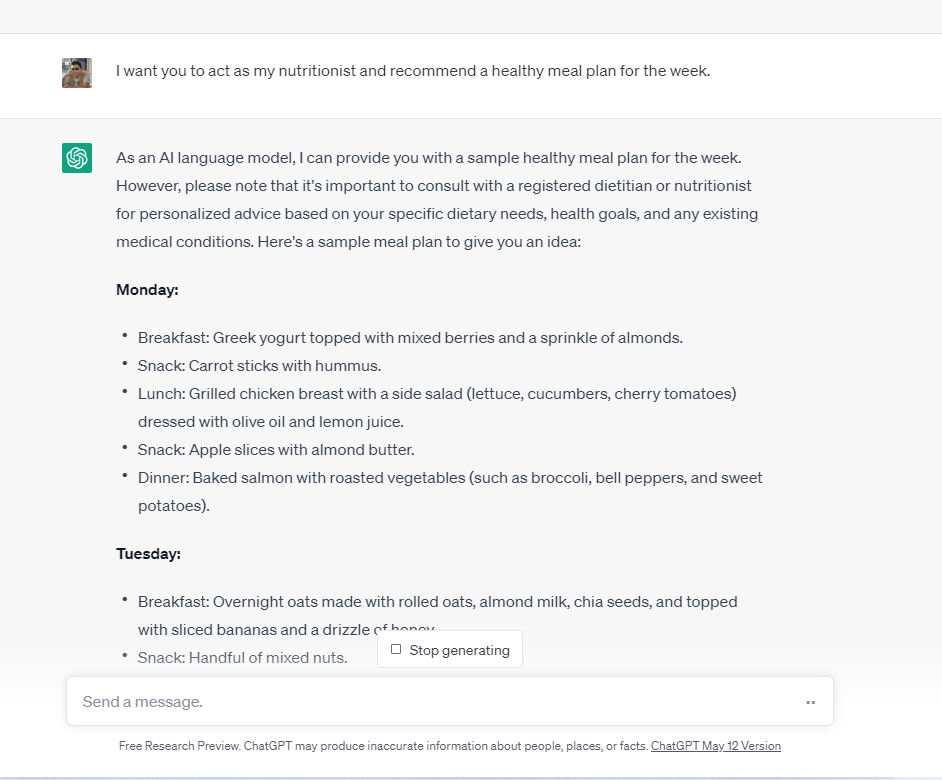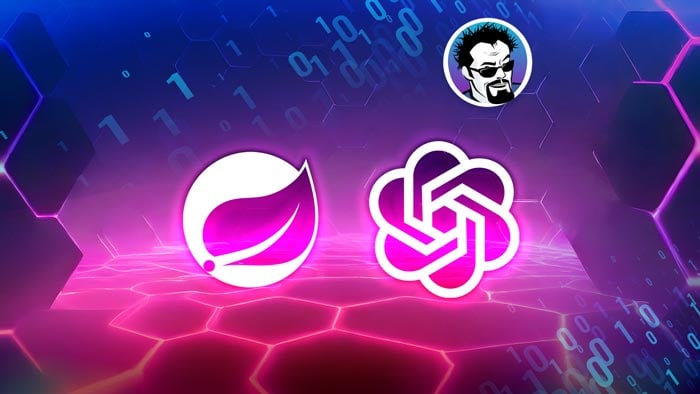ChatGPT Prompt Engineering – Part 3
0 CommentsLast Updated on October 13, 2024 by jt
In part one and part two of this series, we understood ChatGPT. We also learned what prompt priming is and how to use modifiers in prompts.
In models like ChatGPT. A prompt is a text input provided to the model to generate a corresponding output or response. The quality and relevance of the prompt can significantly impact the ability of the model to generate accurate and coherent responses.
Prompt engineering involves selecting appropriate keywords and phrases that can guide the model toward generating the desired response. It also involves fine-tuning the model on specific tasks or domains by providing relevant prompts to improve its accuracy and effectiveness.
Additionally, prompt engineering can involve optimizing the length, structure, and format of the prompt to maximize the model’s ability to understand and respond appropriately.
In summary, prompt engineering is an essential aspect of language model development that involves carefully designing and optimizing prompts to enhance the performance of the model in generating accurate and coherent responses.
There are several prompt engineering techniques. We will start with one of the most commonly used prompt engineering techniques – that is “I want you to act as” Prompting.
I Want you to Act as Prompting
The prompt “I want you to act as” is a directive statement that instructs ChatGPT to take on a particular role or responsibility. It is a common type of prompt used in various contexts, such as in work settings, educational environments, and personal relationships.
The prompt is often followed by a specific task or expectation, such as “I want you to act as my representative in this meeting” or “I want you to act as the project manager for this task.” It is intended to provide clear guidance and direction to ChatGPT so that it understands the required role and responsibilities.
Using this type of prompt can be an effective way to delegate tasks, assign responsibilities, and establish clear expectations in various contexts.
Some examples of “I want you to act as” prompting.
- “I want you to act as”:
- My personal writing assistant and help me write a persuasive essay on climate change.”
- A language tutor and help me improve my French skills.”
- My research assistant and help me find relevant articles on artificial intelligence.”
- A writing coach and provide feedback on my creative writing.”
- A travel guide and suggest some popular tourist destinations in Europe.”
Lets now go to ChatGPT and execute few “I want you to act as” prompts:
I want you to act as my nutritionist and recommend a healthy meal plan for the week.
The ChatGPT output is this.
 Let’s try Another prompt that you can try out is this.
Let’s try Another prompt that you can try out is this.
I want you to act as my financial advisor and suggest some investment options for my savings.
We have seen how to use “I want you to act as” prompts. However, it’s important to note that ChatGPT is still an AI language model and may not always be able to fulfill complex or specialized roles in the same way that a human would. It’s also important to use this type of prompting responsibly and ethically, without misleading or deceiving others.
Shot Prompting
“Shot prompting” in ChatGPT refers to providing the AI language model with short and specific prompts, usually consisting of just a few words or a sentence. This approach is designed to elicit concise and targeted responses from the model, as opposed to longer and more open-ended prompts.
The idea behind shot prompting is to help guide ChatGPT toward generating responses that are more relevant and useful for a particular task or context. It can be especially helpful in scenarios where you are seeking a specific answer or piece of information, such as in customer service or technical support interactions.
For example, instead of asking ChatGPT a broad question like “Can you tell me about the history of the Internet?”, you might use a shot prompt like “Internet history” or “When was the Internet created?” to elicit a more focused response.
Shot prompting can be Zero and One shot prompting. Let’s next look at Zero Shot prompting.
Zero Shot Prompting
Zero-shot prompting is a capability of ChatGPT that allows it to generate responses to prompts for which it has not been explicitly trained. The model can generate responses to unseen prompts without additional training or fine-tuning.
This is possible because ChatGPT is pre-trained on extensive data, enabling it to recognize and generate patterns in natural language.
With zero-shot prompting, the model generates responses to unfamiliar prompts, leveraging language understanding and context.
For instance, even if given unrelated prompts like “Causes of climate change” and “How to make a cake,” ChatGPT can still generate a coherent response to the second prompt, despite lacking specific training on baking or recipes.
One Shot Prompting
One-shot prompting in ChatGPT refers to the ability of the model to generate responses based on a single example or input.
The model can generate a coherent response with a single prompt, without additional training or fine-tuning. One-shot prompting is particularly useful for generating responses to rare or specific prompts. This is in situations where there may not be a large amount of training data available. One-shot prompting utilizes ChatGPT’s existing knowledge and language patterns, eliminating the need for extensive training data.
For instance, employ one-shot prompting to generate a response for a new technical term or acronym unseen by ChatGPT.
With a single example or definition, ChatGPT can generate a coherent response using its understanding of language patterns and context.
Let’s look at an example of one-shot prompting:
What is the meaning of the term 'zeitgeist'?
The output is this.
Another demo prompt is:
What is the capital of Mongolia?
The output is this.
In these examples, ChatGPT was able to generate a coherent and relevant response to a single prompt or example.
One-shot prompting can be a powerful tool for generating responses to specific questions or prompts. It can alo help users quickly access information or clarify their understanding of a particular concept.
Let us next look at another prompting technique called Chain of Thought Prompting
Chain of Thought Prompting
Chain of Thought Prompting is a technique to generate a series of related responses. These responses are based on a single initial prompt or question. This technique involves using the previous response generated by the model. This response is fed as the input for the next prompt or question.
This creates a “chain” of related thoughts or ideas.
The Chain of Thought Prompting technique can be used to generate more complex and nuanced responses. This is possible as each subsequent response builds on the information provided in the previous response. This technique can be particularly useful for generating longer, more detailed responses to complex questions or prompts.
Let’s look at how a Chain of Thought Prompting conversation might look like in ChatGPT:
Initial Prompt: "What is the capital of Australia?" Follow-up Prompt: "What are some major tourist attractions in Canberra?" Follow-up Prompt: "What is the history of the Australian War Memorial?" Follow-up Prompt: "What is the significance of Parliament House in Canberra?"
As you show, By using Chain of Thought Prompting, ChatGPT was able to generate a series of related responses that provide more detailed and informative answers to each subsequent prompt. This technique can be particularly useful for generating longer, more complex responses and for exploring related topics in more depth.
Spring AI: Beginner to Guru
Learn how to use Spring AI to integrate AI into your Spring Framework Applications!





